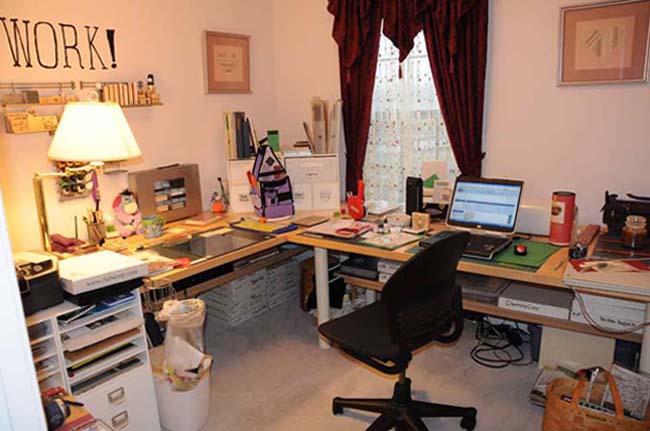I recently found out that there are a lot of digiscrappers out there who don't have any idea about the parts of the machine they are dependent on. Here is a brief description that might help people learn what is which and why.
The first and most important part is the CPU or Central Processing Unit. This is the brains of your computer and it determines how quickly it can respond to any command. It's a chip, or set of chips and the larger the numbers, the better. My little rocket of a laptop has two 2.15MHz chips in it. A modest computer these days would have a single 1.5MHz chip. MHz stands for megahertz. The CPU is how smart and fast the computer is at doing things. If the computer has a wimpy CPU, it can still do things, but it's going to take longer. It can juggle, but only a few things and slowly.
Next there is RAM. That's Random Access Memory, and it also has a great deal to do with how quickly a computer can respond to a command. RAM is where applications actually run and where files are opened. If there isn't much RAM, the computer has to juggle the things it's doing, stopping one thing, working a bit on another, then pausing that and going back to the first task. That means that nothing gets done very quickly and if there are too many things being juggled, everything stops with a crash. The CPU has to tell the RAM what to do and how to juggle. The RAM can't juggle on its own.
Then there is the hard drive, which is simply storage space for the operating system, like Vista, or XP, files, and programs.
If you imagine that a hard drive is a bookcase full of books that are the files and programs, the RAM is your hands. You can't read a book that is sitting on a bookcase, wedged in between other books. You have to take the book off the shelf and hold it as you open it. You are also going to use your hands to turn the pages, to write any changes down, and to close the book and put it back on the shelf. If you have many books out and open, you have to juggle them. When you shut down your computer, the RAM will go blank. There is nothing stored in RAM when your computer is turned off. The hands are empty and idle.
Then there is the video card. If you have a video card that is robust, with on board RAM, it would be as if your glasses had an extra pair of hands attached to them to turn the pages of your books for you. Some of the better video cards are smart enough to tell themselves how to juggle, freeing up the CPU and the main RAM for other jobs.
Did you notice something? Hard drives don't have much to do with how quickly your computer responds. But if you put so much stuff on the hard drive that there isn't any space left, your computer will slow down. Have you ever tried to find a book on an overcrowded bookcase, with things wedged in and no space left for even one more magazine? That's what is happening in your computer. If you leave 20% of your hard drive free, the bookcase that is your hard drive won't be too crowded to use.
What's a mother board? Everything plugs into the mother board. It's the home of all the parts that make up the computer. The CPU plugs into the mother board, the RAM plugs into the motherboard. The hard drive, the video card, they all plug into the mother board. Your monitor plugs into your video card, so the monitor is connected. Your network card plugs into the mother board so you can connect to the Internet. The mother board lets each of the parts communicate with the rest of the parts and pulls the parts into a whole, single computer.
Friday, September 12, 2008
Subscribe to:
Post Comments (Atom)





No comments:
Post a Comment